#Native American Art
Explore tagged Tumblr posts
Text

Whale Effigy 🐳 Chumash (California, West Coast), c.1200-1600 Steatite, shell inlay, 7.1 x 9.5 cm Montreal Museum of Fine Arts 1950.51.Ab.9
#animals in art#Chumash art#Native American art#Indigenous art#soapstone#steatite#carving#figure#sculpture#animal effigy#Montreal Museum of Fine Arts#whale#marine mammals#cetaceans#ocean life
779 notes
·
View notes
Text


Cannupa Hanska Luger, New Myth, Future Technologies, 2021

Dana Claxton, Headdress-Jeneen, 2018

Teresa Baker, Hidatsa Red, 2022

Raven Chacon, For Zitkala Sa Series, 2019

Caroline Monnet, Echoes from a near future, 2022

Marie Watt, Skywalker/Skyscraper (Calling Sky World), 2021

Anna Tsouhlarakis, The Native Guide Project, 2019

Meryl McMaster, Harbourage for a Song, 2019

Marie Watt, Companion Species (Calling Back, Calling Forward), 2021
Staff Pick of the Week
An Indigenous Present proposes that a book can be a space for community engagement through the transcultural gathering of more than sixty contemporary Indigenous and Native artists. Published by BIG NDN Press and Delmonico Books in 2023, An Indigenous Present was conceived of and edited by Mississippi Choctaw and Cherokee artist Jeffrey Gibson (b. 1972) over the course of nearly two decades.
In Gibson’s own words, “An Indigenous Present celebrates the work of visual artists, musicians, poets, choreographers, designers, filmmakers, performance artists, architects, collectives, and writers whose work offers fresh starting lines for Native and Indigenous art. But the book does not attempt comprehensiveness. Rather, those included here are makers I admire, have collaborated with or been inspired by, and who’ve challenged my thinking. . . . These artists and what they make will guide us to Indigenous futurities authored by us in unabashedly Indigenous ways.”
An Indigenous Present features over 400 pages of color photographs, poetry, essays, and interviews resulting in a stunning visual experience for readers and a shift towards more inclusive art systems. The front cover art shown here is by Canadian artist Caroline Monnet entitled Indigenous Represent.
View other posts from our Native American Literature Collection.
View more posts featuring Decorative Plates.
View other Staff Picks.
– Jenna, Special Collections Graduate Intern
#Staff Pick of the Week#staff picks#an indigenous present#jeffrey gibson#BIG NDN Press#delmonico books#indigenous art#contemporary art#caroline monnet#Native Americans#Native American art#Native American artists#Native American Literature Collection#Jenna
2K notes
·
View notes
Text

Article Link
"Minnetonka first started selling its “Thunderbird” moccasins in 1965. Now, for the first time, they’ve been redesigned by a Native American designer.
It’s one step in the company’s larger work to deal with its history of cultural appropriation. The Minneapolis-based company launched in the 1940s as a small business making souvenirs for roadside gift shops in the region—including Native American-inspired moccasins, though the business wasn’t started or run by Native Americans. The moccasins soon became its biggest seller.

[Photo: Minnetonka]
Adrienne Benjamin, an Anishanaabe artist and community activist who became the company’s “reconciliation advisor,” was initially reluctant when a tribal elder approached her about meeting with the company. Other activists had dismissed the idea that the company would do the work to truly transform. But Benjamin agreed to the meeting, and the conversation convinced her to move forward.
“I sensed a genuine commitment to positive change,” she says. “They had really done their homework as far as understanding and acknowledging the wrong and the appropriation. I think they knew for a long time that things needed to get better, and they just weren’t sure what a first step was.”

Pictured: Lucie Skjefte and son Animikii [Photo: Minnetonka]
In 2020, Minnetonka publicly apologized “for having benefited from selling Native-inspired designs without directly honoring Native culture or communities.” It also said that it was actively recruiting Native Americans to work at the company, reexamining its branding, looking for Native-owned businesses to partner with, continuing to support Native American nonprofits, and that it planned to collaborate with Native American artists and designers.
Benjamin partnered with the company on the first collaboration, a collection of hand-beaded hats, and then recruited the Minneapolis-based designer Lucie Skjefte, a citizen of the Red Lake Nation, who designed the beadwork for another moccasin style and a pair of slippers for the brand. Skjefte says that she felt comfortable working with the company knowing that it had already done work with Benjamin on reconciliation. And she wasn’t a stranger to the brand. “Our grandmothers and our mothers would always look for moccasins in a clutch kind of situation where they didn’t have a pair ready and available to make on their own—then they would buy Minnetonka mocs and walk into a traditional pow wow and wear them,” she says. Her mother, she says, who passed away in 2019, would have been “immensely proud” that Skjefte’s design work was part of the moccasins—and on the new version of the Thunderbird moccasin, one of the company’s top-selling styles.
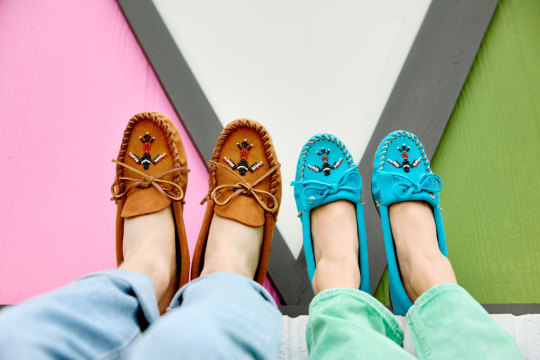
[Photo: Minnetonka]
“I started thinking about all of those stories, and what resonated with me visually,” Skjefte says. The redesign, she says, is much more detailed and authentic than the previous version. “Through the redesign and beading process, we are actively reclaiming and reconnecting our Animikii or Thunderbird motif with its Indigenous roots,” she says. Skjefte will earn royalties for the design, and Minnetonka will also separately donate a portion of the sale of each shoe to Mni Sota Fund, a nonprofit that helps Native Americans in Minnesota get training and capital for home ownership and entrepreneurship.
Some companies go a step farther—Manitobah Mukluks, based in Canada, has an Indigenous founder and more than half Indigenous staff. (While Minnetonka is actively recruiting more Native American workers, the company says that employees self-report race and it can’t share any data about its current number of Indigenous employees.) Beyond its own line of products, Manitobah also has an online Indigenous Market that features artists who earn 100% of the profit for their work.
White Bear Moccasins, a Native-owned-and-made brand in Montana, makes moccasins from bison hide. Each custom pair can take six to eight hours to make; the shoes cost hundreds of dollars, though they can also be repaired and last as long as a lifetime, says owner Shauna White Bear. In interviews, White Bear has said that she wants “to take our craft back,” from companies like Minnetonka. But she also told Fast Company that she doesn’t think that Minnetonka, as a family-owned business, should have to lose its livelihood now and stop making moccasins.
The situation is arguably different for other fashion brands that might use a Native American symbol—or rip off a Native American design completely—on a single product that could easily be taken off the market. Benjamin says that she has also worked with other companies that have discontinued products.
She sees five steps in the process of reconciliation. First, the person or company who did wrong has to acknowledge the wrong. Then they need to publicly apologize, begin to change behavior, start to rebuild trust, and then, eventually, the wronged party might take the step of forgiveness. Right now, she says, Minnetonka is in the third phase of behavior change. The brand plans to continue to collaborate with Native American designers.
The company can be an example to others on how to listen and build true relationships, Benjamin says. “I think that’s the only way that these relationships are going to get any better—people have to sit down and talk about it,” she says. “People have to be real. People have to apologize. They have to want to reconcile with people.”
The leadership at Minnetonka can also be allies in pushing other companies to do better. “My voice is important at the table as an Indigenous woman,” Benjamin says. “Lucie’s voice is important. But at tables where there’s a majority of people that aren’t Indigenous, sometimes those allies’ voices are more powerful in those spaces, because that means that they’ve signed on to what we’re saying. The power has signed on to moving forward and we agree with ‘Yes, this was wrong.’ That’s the stuff that’s going to change [things] right there.”"
-via FastCompany, February 7, 2024
#indigenous#indigenous artists#indigenous art#moccasins#thunderbird#native american#native american art#cultural appropriation#indigenous peoples#cultural representation#minnesota#minnetonka#minneapolis#red lake nation#ojibwe#anishinaabe#reconciliation#fashion#fashion news#good news#hope#indigenous designers#native artist#indigenous artist
2K notes
·
View notes
Text

Navajo Miku !! im late bcs i was away from my drawing stuff at the peak but wtv
#hatsune miku#miku fanart#vocaloid miku#brazilian miku#miku#miku from my culture#miku from your culture#navajo#native american#native american art#fanart#navajo nation#vocaloid
780 notes
·
View notes
Text

Rick Bartow (Native American, 1946-2016), Red Crow Blue Sky, 2011. Acrylic on Gessobord, 12 x 9 in.
846 notes
·
View notes
Text
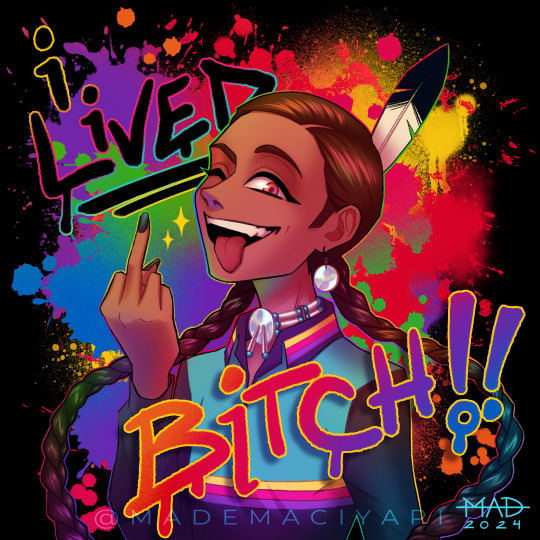
Happy Native American Heritage Month
admittedly, when 'Indigenous People's Day' or 'Native American Heritage Month' come around, i can't help but feel a little angry. millions of my people suffered and died at the hands of this country - and they think one month of remembrance is enough to make up for it?
but as i've gotten older, i've started to feel more appreciative of the fact that i am even here to celebrate these holidays at all. because the truth is, i'm the survivor of a genocide. i think that i should try to celebrate the fact that i am alive today, rather than only being angry about moments in history that i can't change. not everyone is as lucky as me - especially right now, on the other side of the world where such horrendous things are happening all over again to someone else..
but i can't exactly stop the anger completely (especially with current events in mind) so maybe meeting halfway would be acceptable.
I lived, bitch!! they tried to kill us, but i'm still here! and that's worth celebrating.
#native american#native american heritage month#native american art#indigenous#indigenous art#my art#i struggle a lot to organize my thoughts...#i hope this reads well#theres a lot more that i wanted to say but#i'm not great at words y'know?
591 notes
·
View notes
Text

Oscar Howe (Native American, Yanktonai Dakota, 1915-1983) - Eagle Dancer (1953-1957)
620 notes
·
View notes
Text
i want to highlight a native american artist that i adore this native american heritage month, steph littlebird! here's just a few of my favorite pieces & those that i have bought prints or stickers of
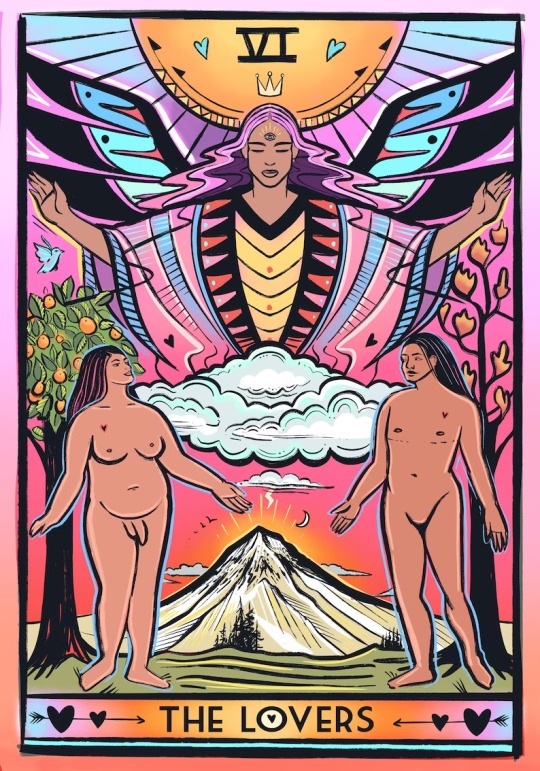
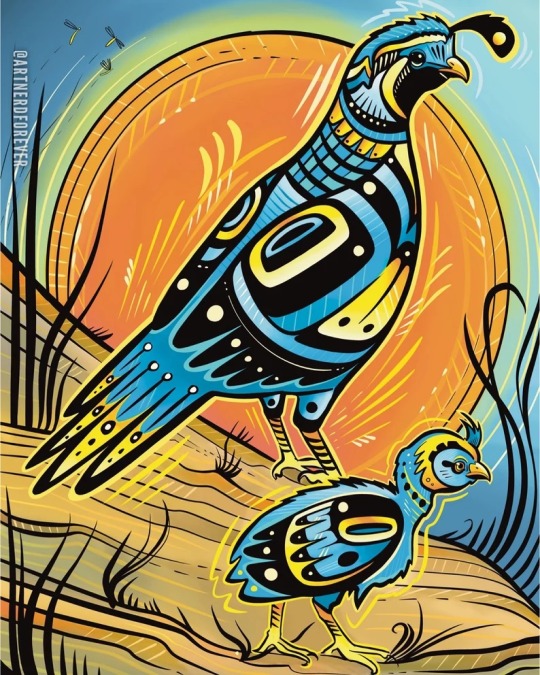

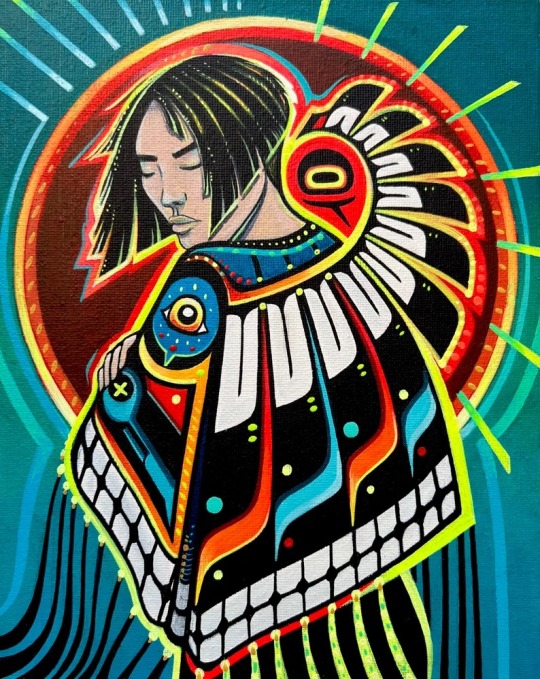
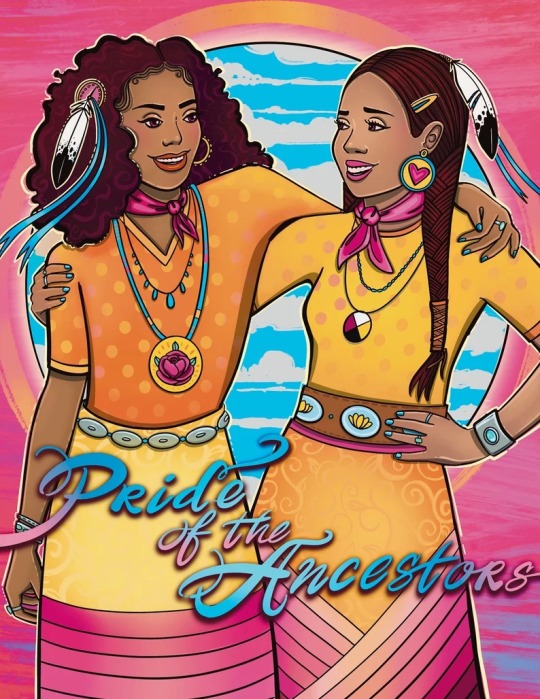

i would highly recommend checking out steph's etsy shop!
#steph littlebird#stephlittlebird#native american#native american artist#native american art#art#two spirit#tarot#the lovers#trans#queer
947 notes
·
View notes
Text

Cradleboard (Bibi k'inpi) made from wood, leather, glass beads, metal, and porcupine quills. Dakota, western Great Lakes Region, circa 1840.
from The Peabody Essex Museum
192 notes
·
View notes
Text
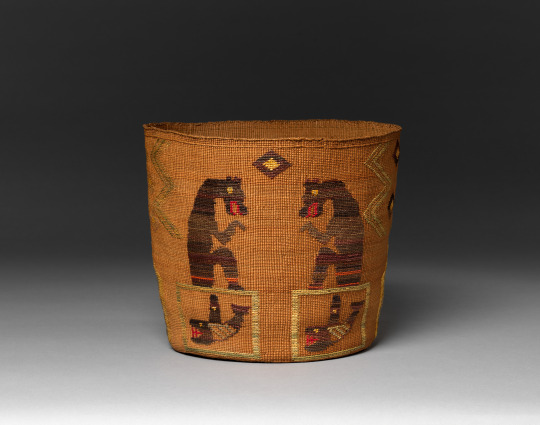
Basket. Tlingit, Native American ca. 1900. Spruce root and dyed and undyed beach or rye grass .
145 notes
·
View notes
Text


Autumn Borts-Medlock (K'apovi [Santa Clara Pueblo], b. 1967)
Chaco Parrot, 2014
Bronze, 30 x 24 x 29 cm
Smithsonian NMAI 26/9343
#animals in art#birds in art#bird#parrot#Autumn Borts-Medlock#K'apovi art#Pueblo art#Native American art#Indigenous art#bronze#metalwork#sculpture#animal effigy#Smithsonian NMAI#21st century art#contemporary art#women artists
164 notes
·
View notes
Text

Winter Solstice 2024
It is cold and it is dark, but the Winter Solstice brings the promise of light's return and the warming of our world. To celebrate this most important day, we feature a naturally-dyed wool weaving entitled Náhookǫsji Hai (Winter in the North) / Biboon Giiwedinong (It is Winter in the North) held at the Minneapolis Institute of Art (MIA) and produced by Navajo artist D. Y. Begay in 2018. This image, which is only a portion of the slightly larger work, is from our copy of the exhibition catalog Hearts of Our People: Native Women Artists edited by Jill Ahlberg Yohe and Teri Greeves (Kiowa) and published by the MIA in association with the University of Washington Press in 2019.
D.Y. Begay (b. 1953), a Navajo born to the Totsohni’ (Big Water) Clan and born for the Tachinii’ (Red Running into Earth) Clan, is a fourth-generation weaver. Begay’s tapestries encompass her interpretation of the natural beauty and descriptive colors of the Navajo reservation, reflecting on her Navajo identity and her family’s weaving tradition. This spiritual connection to the plants yields the natural colors that are transformed into evocative land formations on her loom. Of the weaving shown here, Jennifer McLerran, curator at the Museum of Northern Arizona and a retired assistant professor of art history at Northern Arizona University, writes:
Most of D. Y. Begay's textiles respond to the Southwest landscape in which she was raised and resides today. For this work, a textile produced with all-natural dyes and handspun wool, Begay traveled to Minnesota in the depths of winter to observe the land surrounding the Grand Portage Indian Reservation of the Ojibwe people. Over an extended period she observed changing light conditions as the sun and clouds moved across the sky, altering the hues of snow and water.

D. Y. Begay with her weaving Confluence of Lavender by Arizona videographer Kelso Meyer, 2016. From the University of Virginia Mellon Indigenous Arts Program.
We wish you a most serene Winter Solstice.
View posts from Winter Solstices past.
View other posts from our Native American Literature Collection.
#Winter Solstice#D. Y. Begay#Winter in the North#Navajo weaving#Navajo textiles#Indigenous artists#Navajo#Ojibwe#textiles#Native American artists#Native Americans#Indigenous#indigeneity#Jill Ahlberg Yohe#Teri Greeves#Jennifer McLerran#Hearts of Our People: Native Women Artists#Native American Literature Collection#Indigenous American Literature Collection#Native American art#Indigenous art
269 notes
·
View notes
Text

Edward W. Gifford, Central Miwok Cat's Cradles, 1933
#my post#photography#b&w#native american art#indigenous history#1930s#yosemite#cats cradles#edward w gifford#miwok tribe
129 notes
·
View notes
Text

Jeffrey Gibson (Native American (Mississippi Band of Choctaw, Cherokee), 1972), himmak pilla, 2022. Screen print on Arches 88 mounted to mat board with inlaid panel of handwoven beadwork, 20 × 15 in. Edition of 24
301 notes
·
View notes
Text
Look what I found for sale in the gift shop at work on my lunch today! (I work in a hospital run by a Native American tribe in the southern USA.)
I am very sad and very scared thinking about the future right now, but it seems Arthur and Charles wanted to pop in and remind us that even if the road is long and difficult, everything will work out in the end.
Our time ain't over yet, so don't give up the fight!
As Arthur would say, "Ain't no shame in lookin' for a better world."

@noshirdalal
#rdr2#red dead redemption 2#arthur morgan#charles smith#Native American art#Painted feathers#feather art#roger clark#noshir dalal#Buck and bison
97 notes
·
View notes
Text
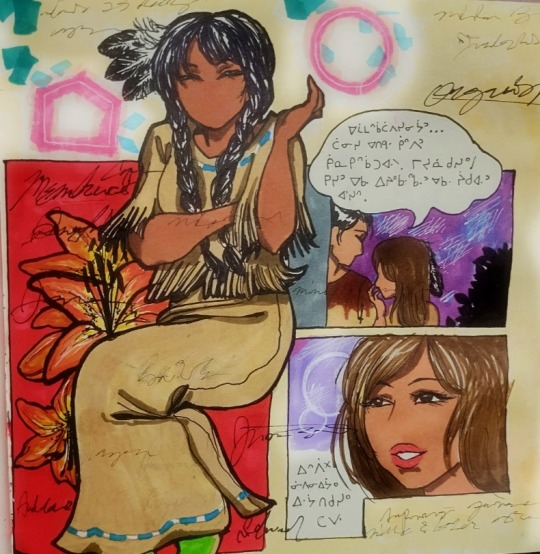
ᒫᐣᑲ...
Fake panel of a "shoujo" (inspired) comic in a Native Ledger art style
#justin's art#ndn art#ledger art#native american#native american art#first nations#fnmi#artists on tumblr
576 notes
·
View notes